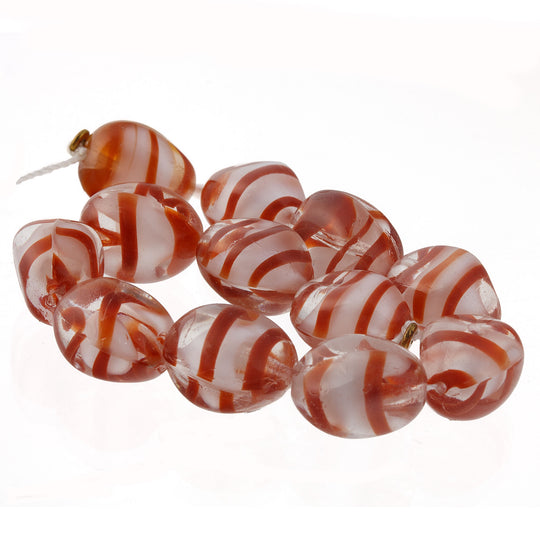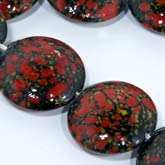Venetian and Lampwork Bead: saturated colors, elaborate designs & exceptional polish,
The first glass beads produced in the Venetian Republic were most likely used for rosaries. Later Venetian artisans (Murano Island) started to create hollow cylindrical glass canes which were cut and refined by grinding or heating. Venetian glass masters re-discovered Millefiori technique. The most famous of Venetian Millefiori beads is Rosetta bead (aka Chevron bead). The high demand for Murano Glass beads due to trade eventually prompted the Venetian authorities to let glass-making expand beyond Murano. In the 16th century lampworking method of glass-making was established. After Napoleon's defeat of Venice and the accord transferring Venice to Austrian rule, the Venetian glass-making industry greatly suffered and declined. Supported by the Austrians, other glass-making centers quickly developed using Venetian knowledge and experience, most notably in Bohemia. By the end of the nineteenth century Bohemia became a well-established center for glass bead production. Masters from the old glass-making dynasties, led the revival of Venetian glass industry. The bead production came back between the end of the 18th century and World War II, and glass beads were produced in Venice





















